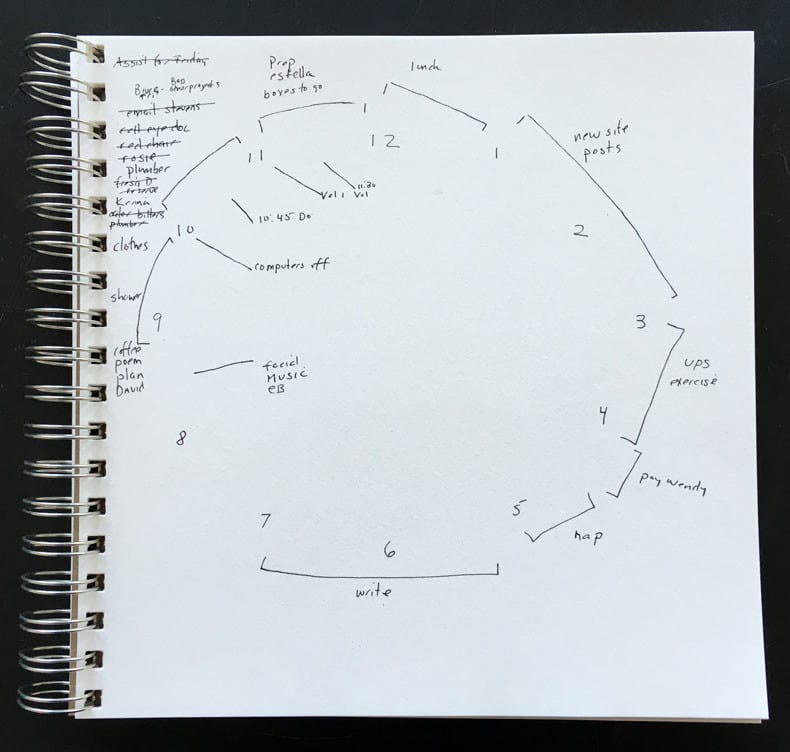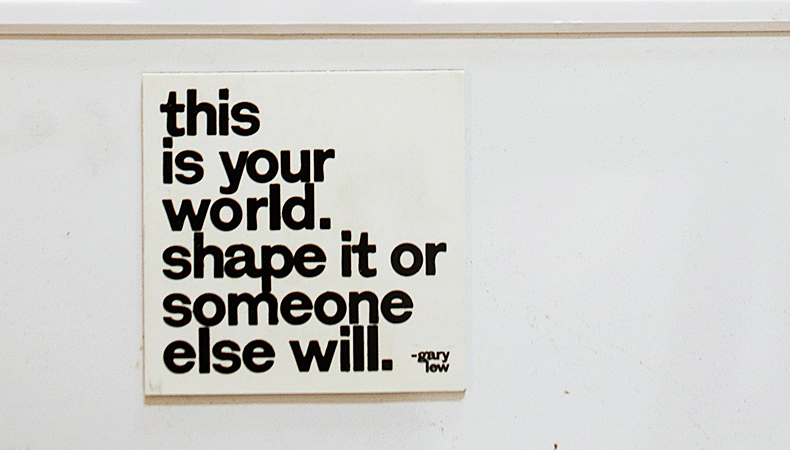An article about time management in Bloomberg Businessweek got me thinking about x-ray vision. I have it in certain parts of my life, like deconstructing simple structures, furniture, recipes, situations, in my head to figure out clever solutions or riffs. But I’m quite blind to it in others, like “Seeing time” a principle Time management educator Marydee Sklar uses to help entrepreneurs and other scattered creative types antidote their often inefficient and energy-draining work habits.
You have to think about time spatially, and see how much space you have in a day. It’s like a puzzle where you have these open spaces and you choose your tasks to fill them. So your to-do list isn’t a list, but assigned times of 10 or 30 or 60 minutes, and you plan spatially by thinking, “Where is the right space of time for me to do this task?”
She advises using paper to plot a day’s worth of to-dos, leaving calendars and other scheduling apps for appointments and reminders. “On screen you can’t get a big enough view of the future”, something especially counterproductive for creative, unique, or entrepreneurial minds, many of whom have ADHDish executive functioning challenges. Their “brains float in time”, so they tend to do whatever is in front of them. Because time is abstract — you can’t see it or touch it — paper allows people to think about it spatially.

As I understand Sklar’s approach, you figure out how long it will take to do the tasks at hand, and then fit them together like a puzzle according to your personal priorities, slotting them into a vertical list of hours in the day, like the old Filofax pages. I looked into her workbook with its many forms and tried constructing a day as a list and fell short very quickly, side-swiped by an interesting breathing technique I started practicing, an unexpected conversation I needed to follow, how I underestimated transition times between tasks. Her lists felt too linear, complicated and constraining. And of course, my long years have taught me that our thinking and energy are not linear, but shift constantly. We need to find our own best practices to work with our fluid selves..
But Sklar’s essential idea of “seeing” time as space and noticing What Takes Up the Space of My Time, The Space in a Day, the Space in a Week is a transformative one. And especially the question,
“Where is the right space of time for me to do this task?”
I might apply it to the paper clock-face grids I used for years (and wrote about here and here and here.) No doubt it will take practice, like any new way of thinking, or seeing.

I also found Skar’s basic priorities clarifying:
- Health is the first thing on your to-do list. If you go down, the whole business goes down, so prioritize exercise and taking care of yourself.
- No. 2 is any tasks connected to money. Money causes stress and anxiety, and it’ll sneak up on you and pile up. Many people hide from money, and then they don’t make good choices.
- Putting out fires—like the website’s down.
- And then after that, you prioritize what on your list will benefit you in the future, and fit in those future tasks.

I figure I’ll weave it all in to poet Naomi Shihab Nye‘s approach to time management in The Art of Disappearing*:
When they say Don’t I know you?
say no.
When they invite you to the party
remember what parties are like
before answering.
Someone telling you in a loud voice
they once wrote a poem.
Greasy sausage balls on a paper plate.
Then reply.
If they say We should get together
say why?
It’s not that you don’t love them anymore.
You’re trying to remember something
too important to forget.
Trees. The monastery bell at twilight.
Tell them you have a new project.
It will never be finished.
When someone recognizes you in a grocery store
nod briefly and become a cabbage.
When someone you haven’t seen in ten years
appears at the door,
don’t start singing him all your new songs.
You will never catch up.
Walk around feeling like a leaf.
Know you could tumble any second.
Then decide what to do with your time.
Walk around feeling like a leaf.
Know you could tumble any second.
Then decide what to do with your time.
*from The Words under the Words: Selected Poems by Naomi Shihab Nye.
Read How to ‘See’ Time: The Secret to Peak Entrepreneur Productivity in Bloomberg Businessweek.
Related Posts



